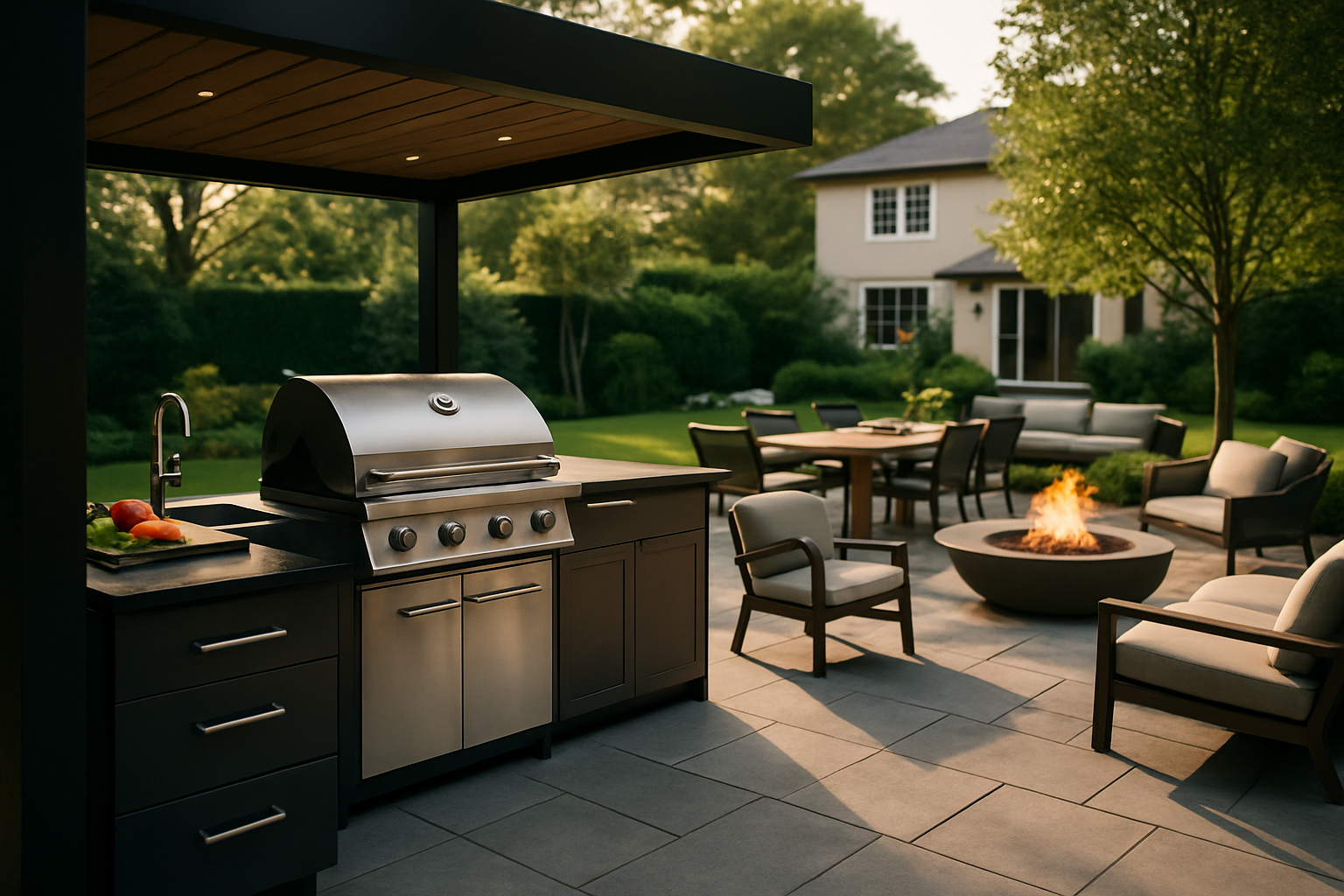Simple Tips for Choosing Outdoor Sun Shades
Creating the perfect outdoor living space requires careful consideration of sun protection, and choosing the right outdoor sun shades can transform your patio, deck, or garden into a comfortable retreat. Whether you're planning a complete home remodeling project or simply upgrading your outdoor area, selecting appropriate sun shades involves understanding various factors from material quality to installation requirements. The right shade solution not only protects you from harmful UV rays but also enhances your property's aesthetic appeal and functionality throughout New Zealand's diverse climate conditions.

What Are the Main Types of Outdoor Sun Shades Available?
Understanding the different types of outdoor sun shades helps you make an informed decision for your outdoor space. Retractable awnings offer flexibility, allowing you to extend or retract coverage based on weather conditions and personal preferences. These motorised or manual systems work well for patios and decks where variable shade is desired.
Shade sails present a modern, sculptural option that creates dramatic visual interest while providing excellent sun protection. These triangular or square fabric panels stretch between anchor points, offering creative design possibilities for gardens and entertainment areas. Pergola covers and gazebo attachments provide structured shade solutions that integrate seamlessly with existing outdoor architecture.
Fixed canopies and umbrellas offer straightforward shade options, with market umbrellas being particularly popular for outdoor dining areas. Roller blinds designed for outdoor use can enclose verandas or balconies, creating semi-outdoor rooms that extend your living space while maintaining protection from sun and wind.
Why Does Material Quality Matter for Outdoor Shades?
Material selection significantly impacts your shade’s durability, appearance, and performance over time. High-quality outdoor fabrics must withstand New Zealand’s variable weather conditions, including intense UV radiation, wind, rain, and temperature fluctuations.
Solution-dyed acrylic fabrics offer excellent fade resistance and water repellency, making them ideal for permanent installations. These materials maintain their colour vibrancy even after extended sun exposure and resist mould and mildew growth. Polyethylene mesh fabrics provide good ventilation while blocking harmful UV rays, making them suitable for areas where airflow is important.
Canvas and vinyl materials offer different benefits, with canvas providing natural aesthetics and breathability, while vinyl delivers superior waterproofing. Consider the fabric’s UV protection factor, typically measured as UPF (Ultraviolet Protection Factor), with ratings of UPF 50+ providing excellent protection. Quality materials also feature reinforced edges, strong grommets, and fade-resistant dyes that maintain appearance throughout their lifespan.
How Should You Approach Measuring Your Space?
Accurate measurements ensure your sun shade fits properly and provides adequate coverage for your intended use. Start by measuring the area you want to shade, considering not just the immediate space but also the sun’s path throughout the day and across seasons.
For retractable awnings, measure the width of the area and determine the desired projection distance from the mounting surface. Consider obstacles like light fixtures, gutters, or architectural features that might affect installation. When planning shade sails, identify suitable anchor points and measure the distances between them, accounting for the fabric’s natural curve when installed under tension.
Height measurements are crucial for ensuring adequate clearance for people and furniture while maintaining effective shade coverage. Factor in the sun’s angle during peak hours when determining optimal height and positioning. Consider prevailing wind directions in your area, as this affects both the shade’s performance and structural requirements for safe installation.
What Price Considerations Should Guide Your Decision?
Budget planning for outdoor sun shades involves understanding both initial costs and long-term value. Basic umbrella solutions start around NZD 150-400, while high-quality market umbrellas range from NZD 500-1,200. Shade sails typically cost between NZD 300-800 for the fabric, plus installation expenses of NZD 400-800 depending on complexity.
Retractable awnings represent a larger investment, with manual systems ranging from NZD 1,500-4,000 and motorised versions costing NZD 3,000-8,000 or more. Fixed awnings and pergola covers fall between NZD 2,000-6,000, depending on size and materials. Professional installation typically adds 20-40% to material costs, though this ensures proper setup and warranty coverage.
| Shade Type | Price Range (NZD) | Installation Cost | Lifespan |
|---|---|---|---|
| Market Umbrella | 150-1,200 | DIY-200 | 3-7 years |
| Shade Sail | 300-800 | 400-800 | 8-15 years |
| Manual Awning | 1,500-4,000 | 500-1,000 | 10-20 years |
| Motorised Awning | 3,000-8,000 | 800-1,500 | 15-25 years |
| Fixed Canopy | 2,000-6,000 | 600-1,200 | 15-30 years |
Prices, rates, or cost estimates mentioned in this article are based on the latest available information but may change over time. Independent research is advised before making financial decisions.
How Important Is Ease of Installation and Maintenance?
Installation complexity varies significantly between different shade types, affecting both initial setup costs and ongoing maintenance requirements. Simple umbrella systems offer DIY-friendly installation, requiring minimal tools and setup time. However, larger shade structures often require professional installation to ensure safety and optimal performance.
Shade sails need secure anchor points capable of handling significant tension loads, which may require structural assessment and reinforcement. Retractable awnings involve mounting brackets, electrical connections for motorised units, and precise alignment for smooth operation. Consider your technical skills and available tools when evaluating installation requirements.
Maintenance needs differ substantially between shade types. Fabric cleaning, hardware lubrication, and seasonal storage requirements should factor into your decision. Retractable systems require more maintenance than fixed installations but offer greater versatility. Choose systems with easily replaceable components and readily available spare parts to minimise long-term maintenance costs and complexity.
Selecting the right outdoor sun shade involves balancing multiple factors including space requirements, budget constraints, material preferences, and maintenance capabilities. Quality materials and proper installation ensure years of comfortable outdoor enjoyment while adding value to your home remodeling project. Consider local weather conditions, intended use patterns, and aesthetic preferences when making your final decision. With careful planning and appropriate selection, outdoor sun shades provide an excellent investment in your outdoor living experience and property value.




